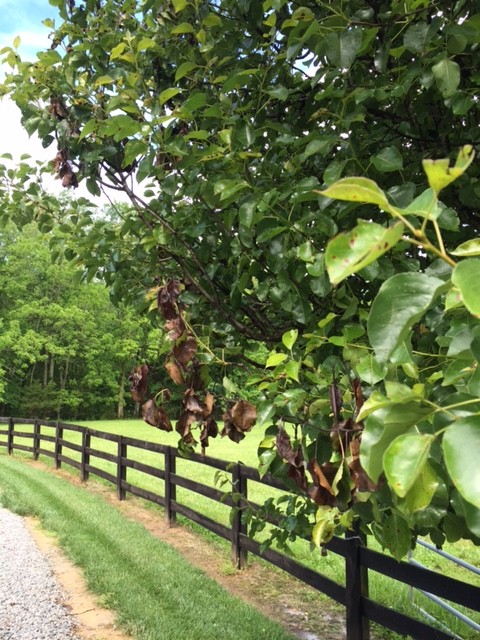What is Fireblight Disease?
Fireblight is a destructive, highly infectious, widespread disease caused by the bacterium (Erwinia amylovora.) It is found on apples, pears and other members of the rose family which includes trees and shrubs in orchards, nurseries and landscape plantings. It is very difficult to control. Virginia Green recommends the cultural practices below.

Symptoms of Fireblight
Fireblight gets its name from the burnt appearance on the leaves of trees. This bacteria enter trees through the tips of young new branches and quickly spread throughout the tree. Infected leaves and branches turn brown or black but the leaves do not drop off. If not treated immediately it can kill the entire tree.
Infected trees tend to have a reddish colored scar on the bark. When temperatures reach 65 degrees or above this scar oozes an orange/brown fluid. The bacteria stays alive during winter months waiting for warm temperatures to return when it can spread to other plants and trees by splashing rain, dew, wind, pruning tools and insects.
Ways to Control Fireblight
- Select resistant trees like Lancelot and Creeping Cotoneaster.
- Over pruning and too much nitrogen fertilizer stimulate this disease.
- Do not plant anything close to wild plants of hawthorn, apple or pear.
- When you see signs of infection, cut off infected branches at least one foot below infected area and conduct a sanitary disposal.
- Clean pruning shears with alcohol or bleach to avoid transferring disease.
- Call us for a free landscape inspection to help identify this problem.
